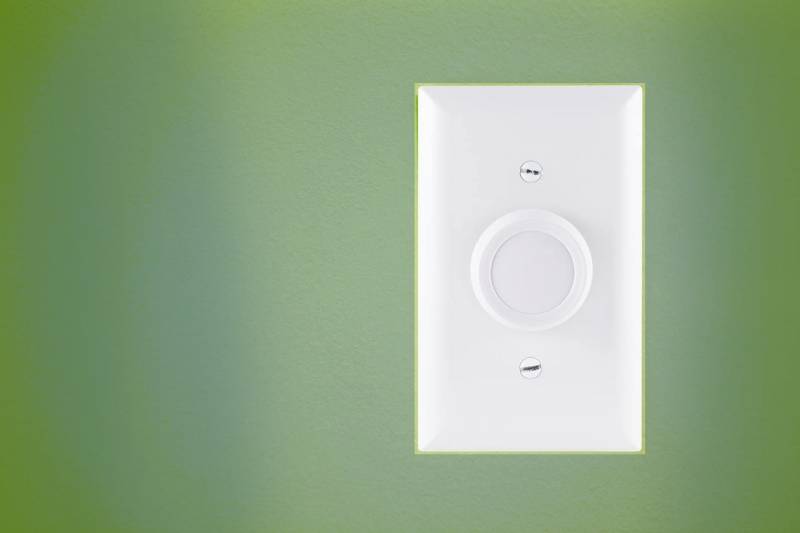Table of Contents
Dimmable LED bulbs are designed and manufactured to give you control over the brightness and lighting modes of your lights.

On the other hand, there are traditional bulbs that can’t light on multiple levels.
In this article, we’ll take a look at what happens if you try to use a non-dimmable bulb in a dimmer.
What is a Dimmer Switch?
A dimmer switch is not only a device to turn on or off the lights but it also adjusts the intensity of the brightness. You can turn the color of the lights according to your mood. These switches have variable resistors that enable them to adjust the intensity of the light.
A dimmer switch is compatible with LEDs, CFLs, and any other advanced technology lights that come with the dimming feature. But if we talk about the topic, what would happen if we put a non-dimmer light in a dimmer switch? We recommend you not perform this experiment because it’ll be bad for the light bulb. At first, it may appear good for some time as everything goes as you expected. But over time, you’ll notice some changes in the intensity of the light bulb. Overseeing this situation can lead to overheating of the bulb that’ll eventually pose a fire hazard in your house.
Mechanical Difference Between Dimmable And Non-Dimmable Bulbs
Non-dimmable LED bulbs are simple semiconductor light sources that emit constant light when a constant current passes through them. The brightness of the dimmable LED bulbs is not changed dependent on voltage.
Light gets discharged from a semiconductor chip, so it’s either on or off. In each case, the LED will keep up its activity at a similar voltage and current level as though it were working at full light yield.
Technically, there are two different ways LED lights achieve dimming:
Pulse Width Modulation
With pulse width modulation (PWM), the LED is customized to part its on-time cycles, estimated in milliseconds. This results in breaks where the light is rapidly turned on and off.
For a low-brightness light of 10% luminosity, the LED is on 10% of the cycle, and off for the other 90%. For a LED light darkened to half luminosity, the light is turned on for a large portion of the cycle.
Fundamentally, the more drawn out the on-periods are comparative with the off-periods, the more eminent the LED looks.
Analog Dimming
Analog dimming is yet another approach to diminish the brightness of an LED bulb. In this situation, the simple diminishing current supply controls the forward current being supplied to the LEDs. Its mechanics straightly decrease the current to diminish the LEDs.
While this method is really easy to execute, the proficiency of the LED is expanded when run at a lower voltage or current. Dimming subdues the working temperatures inside the light source. This specific sort of LED bulb doesn’t offer the best lighting.
Putting A Non-dimmable Led Bulb In A Dimmer
Using a non-dimmable LED bulb in a dimmer is not the best choice as both technologies are incompatible. As we discussed earlier, the dimmer sends the required amount of electric pulses to the LED.
In the case of a non-dimmable bulb, there will be a constant voltage. The following are the most possible outcomes of putting a non-dimmable LED in a dimmer:
1. Lighting Without The Dimming Feature
The first possible outcome of using a non-dimmable LED bulb in a dimmer is that the bulb will light up at its standard lighting capacity. This is because some dimmers tend to transmit the required voltage to the bulb.
This voltage might be the maximum amount of energy that a dimmer may allow transmitting. However, this lighting will be without any dimming feature.
As non-dimming LEDs don’t have the PWM technology that allows a bulb to receive multiple electrical pulses in a short period.
The dimmer will not be able to read and transfer any other voltage apart from the original limit of the LED bulb. This outcome is very rare as there are very few chances of a matching electrical frequency between the bulb and the dimmer.
2. Flickering
The second possibility regarding the usage of a non-dimmable bulb in a dimmer is the flickering of the LED bulb.
This is a more likely outcome as the dimmer will not be able to match and transfer the current required by the bulb. This will result in a low or high voltage distribution.
3. Reduction In The Useful Life Of The Bulb
The third possible outcome of trying out the invalid pairing between a non-dimmable bulb and a dimmer is that the useful life of the bulb will significantly decrease.
Even if the bulb somehow lights up at its full capacity, it is extremely unlikely that the dimmer will only transmit the required voltage. Also, you’ll be stuck with the option to use the dimmer as an on/off switch rather than a regulator.
4. Immediate Damage
The last and most probable outcome that you might face is that the LED bulb will completely fry. Most non-dimmable LED bulbs don’t have the technology to detect a short circuit and overload to prevent system failure. These bulbs will most likely be damaged immediately if you tried to use them in a dimmer.
Therefore, we can conclude that using a non-dimmable bulb in a dimmer is not the best option for dimming an LED bulb.
This practice is not recommended as not only it has the potential to damage the bulb but also causes damage to the electrical system in your house.

Issues With Choosing The Wrong Type Of Dimmers
If you have a dimmable LED, choosing the right type of dimmer is vital. This is because there are different types of dimmers, including resistive, leading-edge, trailing-edge, and electronic dimmers.
Following are a few issues that you can encounter if you use the wrong type of dimmer with a dimmable LED light:
- Glimmering – Bulbs will glimmer. This can likewise happen if a non-dimmable light is utilized.
- Dead bulb – No light yield toward the finish of the scale
- No coordination – When the dimmer is changed, there is no coordination with a change in brightness. This means that light may not diminish to a selected level.
- Improper function – The brightness may not go from low to high smoothly.
- Damage or error – LED driver, circuit, or LED can be harmed or completely fried out.
- Load beneath the minimum capacity – The energy volume of the LED light is below the level needed by the dimmer.
- Different models – Different models of LED will probably have various drivers. As these drivers operate contrastingly, this could result in brightness-dimming issues.
- Additional bulbs – All the above-mentioned issues may become prominent when various bulbs are added with a single dimmer.
Best Course Of Action
If you are looking for a long-term solution to your lighting problems, you’ll have to install the correct type of supportive technology in your house.
You’ll have to choose and install the dimmable LED bulbs and the right type of dimmers for a long-lasting, energy-saving lighting option.
Using a non-dimmable LED in a dimmer may work for you for a short time, but you should not risk the entire electrical system of your house. Especially if there are no circuit breakers installed to prevent overloads and short circuits.



![What To Put On Windows To Keep Heat Out? [8 Ideas] What To Put On Windows To Keep Heat Out? [8 Ideas]](https://homesteadandprepper.com/wp-content/uploads/2021/04/Window-blinds-To-Keep-Heat-Out-150x150.jpg)




